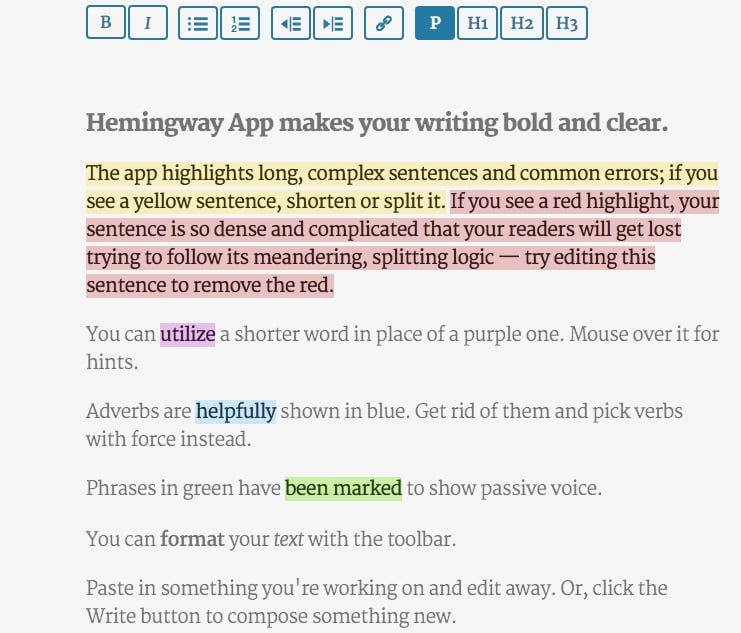Some businesses are effortlessly nailing their blogging efforts; others are not so lucky.
Like 86 percent of B2B brands using content marketing, it's ideal to regularly churn out blog posts to help boost those dull conversion rates. After all, the content you create shapes customer experience. Along the customer journey, the user experience your customer attributes to your brand is formed from their first impression. Often, this happens on your blog.
A Typical Blogging To-Do List
In your desire to create content just because everyone's doing it, your blogging to-do list will most likely look like this:
- Publish two blog posts a week.
- Hire a writer.
Hire an editor (Scratch that! Perhaps the writer I'll recruit has editing skills, too. Perfect!)- Fill out the monthly editorial calendar.
- Set up accounts in popular social media platforms to get those blog posts promoted.
- Set up analytics. (Uhuh)
- Assign who-does-what in the blog development process (writing, editing, graphics, publishing, promotion, analytics, etc.)
Whew!
You Are What You Blog
Now, don't you think something's missing in the list? Really? Take a look at the list again and work out what's missing.
Not sure yet what's lacking? Without the missing piece, you'll most likely end up with content that doesn't necessarily resonate with your audiences.
The questions below can help you reflect, assess, and evaluate what your blog content truly says about your brand. The missing piece will be unraveled later in the post!
Is your brand consistent with your brand's overall message?
Are you a limo company frequently blogging about how one of your employees bakes the most delish chewy chocolate cookies? Or are you a trucking company blogging about cultural issues?
Of course, there may be exceptions to the rule but the takeaway here is to create content in your blog that is consistent with your brand message. Having a consistent experience across all touch-points is a key driver of brand trust.
Take Patagonia for example. This wonderful outdoor brand has long been proponents of sustainability. In fact, they even encourage their customers to avoid purchasing their products unless you badly need it. In their company blog, guess what they're waxing poetic about? You bet it's all about how their production team and sponsored athletes are practicing sustainability themselves.

Inconsistent content can make you seem disconnected and out of touch with your customers.
Don't write about what you want. Blog about what they want to read instead.
So you think grammar and spelling are no big deal?
Many would probably argue that it's the overall message that counts. But the clothes make the man, right?
The same goes for how your content is presented. No matter how solid your arguments are, no one's going to believe in you if it's delivered full of spelling errors and blatantly bad grammar. To drive home the point, 74 percent of online audiences surveyed stated that they notice the quality of spelling and grammar on a company website. Similarly, six out of 10 claimed that they would not use or buy from a company whose website is filled with grammar errors.

The rare appearance of typos are okay and can be easily fixed. Blog posts filled with spelling errors and bad grammar make your brand seem apathetic or just plain dumb. Spell-check, proofread, and edit ruthlessly!
There are several apps and tools to keep those errors at bay. Grammarly is one of these.
Is your content stuffy and pompous?
Some content creators think they have to make themselves sound smart. Back in Shakespeare's time, this was called putting on airs. Today, it makes your blog sound stuffy and pompous. No one wants to read Frasier Crane's scholarly writing, regardless of how professional your industry is.
Your audiences are looking for value, not academic essays. Sure, long-form posts often get shared more but why push for 2,000 word posts when you can say it in 500 words?
Shorter is not better either. It has nothing to do with length but rather it's all about the presentation and the meat of your content. If possible, trim the fat with the Hemingway app!

Are you out of context?
In planning and coming up with useful content, strategist Elizabeth McGuane explains that it requires you to know your users' content.
Context is not just about figuring out the who of your target audiences. It should also take the when and why into account. As HubSpot's Corey Eridon explains, taking context into consideration means delivering the right content, to the right people, at the right time.
Imagine you're an HVAC contractor in Phoenix who is considering blogging for the first time. At first, it's safe to assume that your target audiences are are residents in Phoenix and neighboring areas.
If you dig further into the context rabbit hole, you'd realize that Phoenix residents having HVAC emergencies are more likely to arrive in your blog from search. With this possible scenario in mind, the bulk of your blog content should be geared towards providing useful information associated with HVAC emergencies.Also, it pays to be to-the-point at the beginning of your blog posts. Chances are, your readers mildly aggravated and are not in the mood for jokes.
According to information architect Daniel Eizans, using content for content strategy should take the following into account: personal user behavior, possible user situations that relate to your business or product, and ambient data (time of day, region, content access device, geolocation).
Are you putting more weight on the sales pitch?
Your brand's blog is not about you. It should be about your customer. It's a simple concept yet many tend to forget the moment they are actually blogging.
Want to know the fastest way to bounce website visitors and shoo leads away? Talk about yourself and how great you are in each of your blog posts.
Be useful, open, and honest. Don't be afraid to appear vulnerable. Your leads will feel more connected with you if they can see that you're also dealing with what it means to be human.
In hindsight, a sales pitch will almost always lead to skepticism and eventually, distrust. Building trust should be your blog's true north. Many brands mistake blogging though as a venue for their sales pitch.
Learn why the Lean Labs team fight against the sales pitch in our clients' blogs here.
So, what's missing?
All of those mentioned above can be remedied by what we mentioned earlier as the missing piece in your blogging to-do list.
Cue in orchestral tunes...

It's the Writing Style Guide!
A well-crafted style guide can do wonders to your blog content by:
- Promoting consistency in your blog's tone, fonts, colors, and writing voice
- Ensuring that the content your team creates is in context and resonates with your audience
- Minimizing spelling errors and grammar mistakes
- Saving you time whenever someone new joins the content team
- Creating uniformity not just in your blog but across all types of content
HubSpot has come up with a useful writing style guide for the web plus a free template to boot. Or hop on to our inbound marketing blog for more insights on making your brand stand out with a robust content strategy!